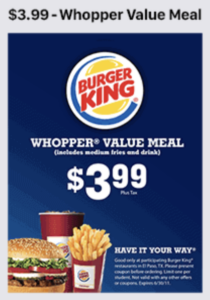How do you talk about your business? Do you describe its products and services in a way that gets your target audience interested and excited? Do you know?
Good marketing messaging is like a shiny light. It piques someone’s interest to get them engaged and ready to learn more. But bad messaging falls flat, and often results in losing a prospective customer before they even stop to evaluate your product or service.
This duality is why businesses focused on successful go-to-market planning launch marketing messaging testing. By testing the way key messaging, value propositions, and marketing claims resonate with a target audience, businesses have clear direction on how to talk about their products in a way that will get customers to buy.
What Is Message Testing Market Research
Message testing market research pinpoints the specific types of messages that will resonate most strongly with a target audience. By displaying different messages to your desired audience and gauging changes in perception, interest, and purchase intent, you can isolate which messages will drive interest and engagement.
Most organizations will have a variety of things to tout about their business. And, they’ll have a lot of ways to go about touting them. How should they choose? Marketing message testing gives organizations objective data in-hand to advise them on the right path forward.
Why Perform Message Testing Market Research
Think about every single piece of marketing collateral that your organization produces. This includes your website and standalone landing pages. It likely includes blog posts and emails, as well as social media posts. If you engage in paid advertising, it could also include Google ads and Facebook ads. For offline brands, this also includes things like your packaging, inserts, or posters. The list is seemingly endless.
Each and every one of these items includes messages. That is, information about who you are, what your organization does, and why customers would want to buy it. Just getting someone to read your marketing collateral is a major hurdle. As a result, you want to make sure it resonates strongly the moment they do.
This is why message testing market research is so key. It optimizes the chance of messaging hitting the mark dead-on the second a customer reads it. Businesses that pursue this path enjoy higher on-site conversion rates, improved lead volume, and stronger subscription rates.
What Marketing Messages Should You Test
Primary Brand / Product Message: If you’re early to market, you may still be deciding how to talk about your product. The primary brand message does this in a consumer-friendly way. It synthesizes what the product is, what it does, and why a customer would want it. This may sound like a positioning statement, but it isn’t. Primary messages use more approachable language than what you usually see in positioning statements. As a result, they are more relatable and give customers something more tangible to consider.
Product or Brand Benefits: Sometimes called value propositions, brand benefits show what value you deliver to your audience. Typical brand or product benefits may include phrases like “Save Hours Per Day,” “Decrease Operating Costs,” or “Lose Weight While Having Fun.”
These are phrases where you’ll want to have actual proof points to support touting these benefits. For instance, if you have software that’s shown to reduce vendor or supplier costs by a significant amount, then a valid benefit is that you do help decrease operating costs.
Product Claims: These are the tangible claims you can make about what your product will do. They are generally short, snappy, and make your audience believe your product delivers the results they want. These claims can be about the product itself and what is or isn’t in it. Or, it can be about the benefits you receive by using a product. Here are a few classic product claims:
- Zero Trans Fast
- Save Up to 6 Hours Per Day
- Reduce Your Dress Size In 14 Days
- Results Guaranteed Or Your Money Back
How To Perform Marketing Message Testing
A variety of marketing message research and testing options exist. Your goals, audience size, and product life stage generally determine if qualitative or quantitative research is best.
Qualitative Marketing Message Testing
General Process: Via 1:1 interviews or in a focus group setting, present one set of messages, value propositions, or claims. Participants share their initial impressions of the stimulus, and what positive or negative ideas the stimulus evokes.
The process then repeats with each set of stimulus to gather feedback about each option. Participants then see all options and select their most and least favorite.
Pros:
- Does not require large sample sizes
- Nuanced data due to being able to engage and follow-up on initial responses.
Cons:
- Small sample size can skew results
- Showing multiple options can cause sensory fatigue
Quantitative Marketing Message Testing
General Process: A large group of participants that meet your target customer criteria are recruited to take a survey. They are shown a screen with a particular message, value proposition, or claim and asked to evaluate it on a variety of dimensions.
Depending on the number of stimuli you want to test, you can segment your testing audience and give one stimulus per segment. Or, you can show each stimulus to the entire audience, but randomize the orders in which participants see them. If participants are shown all options, they frequently then select their most and least favorite option.
Pros:
- Statistically significant responses
- Can minimize stimuli fatigue or stimuli bias
Cons:
- No nuanced responses
- Requires large sample sizes
- May be impossible to perform if your target is a niche audience
Should Testing Be Done With Text or Visuals?

Customers rarely make decisions in a vacuum. That’s why the more realistic we can make marketing messaging testing the better. This means that if you are able to show a primary message, product benefit, or claim within a package, a screen image, or other relevant visual, do so.
Take this price test for the Burger King Value Meal as an example. Seeing the price next to the full product—burger, fries, soda—helps to put the price in context. It lets a customer fully evaluate the value of the price and product.
Nevertheless, this may not be feasible. For businesses in early product development stages, there may not be viable images to show. Or, businesses that offer services may not have relevant images to share. This is perfectly fine. Consider what the ideal option is, and then evaluate if that’s feasible. If it is, test what that ideal option. If it isn’t, you can still feel confident that you are gathering objective data to help make informed product messaging decisions.





